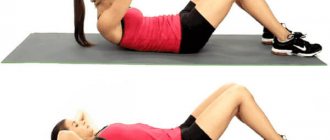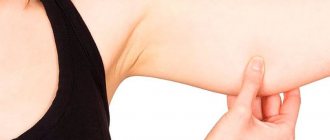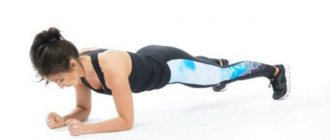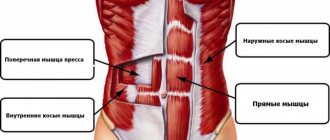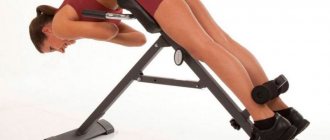Gymnastics for women using the Kegel method in its modern version has been known only since the 20th century, but long before that, representatives of the fairer sex trained the pelvic floor muscles with the help of exercises and various devices. One of the specific simulators used in ancient times was a stone egg with a strong thread. It was placed in the vagina, after which the muscles had to be held or pushed out and moved this round stone inside. Sometimes a weight was suspended from a strong thread to increase the effectiveness of the exercises.
We have heard mentions that women trained muscles in the small pelvis in Ancient Egypt, China, India and other countries. For the most part, hetaeras, priestesses and geishas paid attention to such gymnastics. The technique was hidden, used secretly, so only scanty data has survived to this day on how exactly the exercises were carried out.
Already in the 20th century, ancient traditions were resumed and became widely known as Kegel gymnastics for urinary incontinence in women. Doctors recommended resorting to this technique as an additional measure in the treatment of incontinence that occurs during exercise, coughing, sneezing and other situations when intra-abdominal pressure increases. Systematic implementation of medical recommendations helped strengthen the pelvic floor muscles, thereby eliminating involuntary urine leakage.
The first mention of the benefits of therapeutic exercises belongs to the US doctor Joshua Davis (1932), but the technique became most famous in 1948 thanks to the American scientist Arnold Kegel, who introduced the exercise machine and gave his name to gymnastics. Since then, the Kegel complex for women and men at home has gained mass popularity, and it is still relevant today.
Benefits of Kegel exercises for incontinence
The muscle fibers of the pelvic floor form a kind of hammock at the base of the pelvis. Their task is to fix and strengthen bone tissue, hold the bladder, urethra, intestines, uterus and maintain their functionality. The weakening of these muscles is associated with various reasons. This could be overweight, genetics, persistent constipation, menopause, excessive exercise and much more.
Whatever the reason for weak muscles, Kegels for women are specially designed to strengthen them. The only condition is regularity and correct execution. You need to do the exercises until the pelvic muscles learn to reflexively contract in response to increased intra-abdominal pressure. This reflex will prevent involuntary leakage of urine.
So, it is advisable to do Kegel exercises for urinary incontinence in women if:
- urine is released when coughing or sneezing, laughing and physical activity, as well as during intimate relationships;
- when playing sports you have to wear urological pads;
- muscles weakened after pregnancy and childbirth;
- I am unable to hold urine when there is an urgent urge.
In these situations, Kegel exercises will help strengthen the muscles of the genitourinary organs, and the problem will be solved quickly and effectively.
What are the benefits of exercise therapy for the lumbar region?
Nowadays, almost everyone has heard about spinal osteochondrosis. According to the World Health Organization, 80% of the Russian population has pathologies of the musculoskeletal or musculoskeletal systems. This applies not only to older people, but also to the younger generation aged 29 to 49 years.
Many people feel back pain. It causes discomfort and reduces performance. After therapy, some patients never manage to return to their previous lives, because the disease becomes chronic. This significantly interferes with the return of performance to the previous level or even provokes its cessation.
Back pain is most often related to osteochondrosis. The pathology is very common and can affect anyone.
Osteochondrosis is accompanied by metabolic disorders in intervertebral cartilage and discs. As a result, the muscular and skeletal systems change. It has been proven that the spine has a significant impact on the internal organs, which means they are also subject to pathological transformations. Many doctors say that the most effective therapy for osteochondrosis is physical activity. Therefore, we advise you to pay special attention to exercise therapy for the lumbar spine.
How does osteochondrosis develop?
The spine contains from 33 to 35 vertebrae, and between them are elastic discs. Due to them, it has flexibility and elasticity. The disc has a core covered with cartilage above and below, and along its contour there is a fibrous ring.
Osteochondrosis negatively affects blood circulation and metabolism in the spine. In this regard, the discs dry out, decrease in height, and become less durable and elastic. The fibrous ring does not cope with its function of holding the spine, which leads to its protrusion. In addition, a rupture may occur, resulting in an intervertebral hernia. The consequence of these disorders can be mobility and curvature of the spinal column.
A healthy spine is a reality, but only with an active lifestyle and moderate sports activity. Considering that the age of modern technology forces us to spend most of our time sitting at a computer, do not forget about exercise therapy for the lumbar region. After all, this is the most effective method of treating spinal diseases, as well as their prevention.
Therapeutic exercise has a positive effect on the trophism of elastic discs. As a result, joint mobility improves, the spine is saturated with blood, and its bone components are destroyed more slowly. Exercise therapy for the lumbar region helps to recover after surgery and helps strengthen the back muscles.
Physical therapy is especially recommended for the following population groups:
- Elderly people.
- For those who have previously had vertebral injuries.
- People diagnosed with flat feet and club feet.
- For those who are constantly in a non-standard position.
- People with weak muscles and ligaments.
Osteochondrosis according to the place of occurrence can be classified into osteochondrosis of the cervical, thoracic and lumbosacral spine.
Kegel exercises for pregnant and postpartum women
Pregnancy and childbirth are a difficult process for the body, during which the condition of the muscles in the pelvis plays a big role. Weak tone of other muscles of the body, although it can cause discomfort, is not so dangerous. Weakened pelvic muscles are fraught with painful, protracted labor, as well as decreased libido, prolapse and prolapse of the uterus, and urinary incontinence. Often women experience urine leakage, both during pregnancy (the fetus puts pressure on the bladder) and after childbirth. The second option awaits those who have poor muscle function. Therefore, doctors recommend training them in advance, monitoring their condition during pregnancy and maintaining muscle tone after childbirth.
While carrying a child, thanks to Kegel exercises for urinary incontinence, a woman's tissue elasticity increases, venous congestion decreases, joint mobility improves, intestinal function improves, and the risk of involuntary urine loss decreases. Kegel exercises to strengthen muscles are also important for the process of childbirth itself, since their condition directly affects the maintenance of pregnancy and recovery in the postpartum period.
It is convenient that the training can be carried out at home - Kegel exercises for women do not require a special room and exercise machine and can be performed at any time. You need to exercise before and after childbirth, since muscle elasticity is always needed. Before the baby is born, this will help him to be born, and after that it will speed up the healing of ruptures and prevent organ prolapse. Even after a cesarean section, exercise is beneficial because muscle tone in pregnant women is reduced due to gravity.
Anatomy
The gluteal muscles of the body are 3 paired muscles: gluteus maximus, gluteus medius and minimus.
Side view
The gluteus maximus muscle is the largest muscle in the entire body. It begins at the pelvic bone and attaches to the back of the femur just below the hip joint. The function of this muscle is to extend the hip with slight external rotation. When the hip is fixed, it tilts the pelvis back. It is this muscle that is responsible for the volume of the buttocks. When this muscle is trained, the butt becomes muscular, fleshy, and large.
Training result
The gluteus medius muscle begins on the gluteal surface of the ilium, passes into the short broad tendon and attaches to the greater trochanter of the femur. Attaches to the side of the pelvis. This muscle is responsible for moving the leg forward, backward, and for stabilizing during extension. This muscle seems to be “hiding” under the gluteus maximus. During training, it will not give any additional volume, but it will give a beautiful contour of the buttocks.
The gluteus maximus and gluteus medius muscles are easily controlled for their degree of activity. During training, they can be felt and are responsible for the overall elasticity of the butt.
The gluteus minimus muscle is located under the gluteus medius.
The appearance of the butt depends on how much fatty tissue is between the skin and muscle. This fat can transform and stretch due to various factors.
Factors responsible for the deterioration in the appearance of the butt:
- sudden weight loss or weight gain
- gravity
- passive lifestyle
- bad habits
- lack of sports.
All this leads to ptosis of the gluteal muscles - sagging of the buttocks.
Additional benefits of intimate muscle training
In addition to the benefits of Kegel exercises for urinary incontinence in women, they are beneficial for the health of various systems and the body as a whole. In particular, we are talking about sexual health. If a representative of the fairer sex notices weakened tone of the vaginal muscles (or her partner notices this), wants to improve the quality of sensations received during intimacy, or increase libido, you need to start training immediately. Thanks to regular training, the tone of the pelvic muscles will increase and blood circulation in this area will improve (which is important for those whose activities involve being in a static position for a long time). A woman will be able to control her intimate muscles, which will expand the range of sexual sensations, give joy from intimate caresses and increase libido.
Kegel exercises will also bring significant benefits to those entering the menopause phase. During this period, sexual intercourse can cause discomfort and pain, and the external genitalia are not sufficiently moisturized. If we add to this the increased likelihood of ureteral infections, the picture is bleak. The sooner you start gymnastics, the faster you can eliminate problems. Thanks to regular training, blood circulation will improve, and with it the condition of the mucous membranes. The risk of skin damage during sexual intercourse will decrease, which means the likelihood of infection will decrease. At the same time, the muscular tissue of the genitourinary system will be strengthened, which will prevent incontinence.
How to do the exercises correctly
To properly perform Kegel exercises for women with urinary incontinence, you first need to determine which muscles should be used. Detecting them is not difficult, and there are several simple ways to do this:
- While urinating, pause the stream, then relax and continue. Remember the muscle that had to be tensed when the process was stopped.
- Imagine that you need to keep gases inside the intestines when they try to come out. To do this, tense your muscles as much as possible and remember the feeling.
- Wash your hands, lie down on the sofa and insert a finger into the vaginal cavity, and then try to grasp it with your internal muscles. If you manage to tighten them so that your finger feels a gentle squeeze, this is what you need.
Any of the listed methods or a combination of them can be used for beginners to find the very muscles that need to be strengthened. In the future, a course of gymnastics consists of sequential contraction and relaxation of this muscle. Regularity and patience are important, and soon the result will be noticeable.
Kegel exercises can be done anywhere and at any time - at home, in transport, at your desk, in line. People around you will not guess that the woman is doing the exercises. It is advisable to take a comfortable position - standing, sitting or lying down, and then concentrate on specific muscles. Next, you need to sequentially compress and relax the muscles, while counting to three for each movement. It doesn't matter whether you're watching TV, driving, reading a book or taking a bath - exercise, and the more often the better. Doctors' recommendations boil down to the fact that it is advisable to perform the workout three times a day, each time in a new position, and increase the number of repetitions to 10–15. With this schedule, a significant effect will appear in 2-3 months.
You need to understand that for urinary incontinence in women, Kegel gymnastics is not the only method of treatment, but part of complex therapy. Execution technique and regularity are of great importance. It is advisable to consult a doctor.
What is a gluteal bridge
The glute bridge is an unusual exercise for many. However, this is one of the best exercises that is specifically aimed at strengthening and growing the gluteal muscles. There are several variations of this , and you can also make it more challenging by adding weight above your hips . Typically a barbell, plates or dumbbells . [1]
But why should you include glute bridges in your workout plan? This is one of the best and definitely the most popular butt exercises . Therefore, if you dream of round and elastic buttocks , you should definitely try this exercise. In addition, it will also help improve performance and strength for other compound exercises such as squats or deadlifts , as well as improve overall mobility . [1]
The right approach
Experts give the following recommendations on how to properly perform Kegel exercises for women:
- empty your bladder immediately before class;
- choose a comfortable position - sitting, lying or standing. If the preferred position is lying on your back, your arms should be extended along the body and your knees slightly raised. The neck should not be strained;
- The main movement in any Kegel exercise for women is compression (contraction). It is important to avoid tension in the abdominal muscles, buttocks and thighs, otherwise there will be no result;
- you need to breathe deeply, evenly and calmly, without delay;
- you cannot contract the intimate muscles when urinating - this method, on the contrary, weakens the pelvic floor muscles;
- repeat the complex 3-4 times during the day, performing 5 to 40 repetitions each time. You cannot sharply increase the load, only gradually: perform 15 repetitions for 2 weeks, 20 repetitions for the next 2 weeks, etc.
The correct technique for performing Kegel gymnastics for women allows you to feel the first positive results after just six weeks of regular exercise. Changes will be noticeable in all areas of life, including intimate ones, and self-confidence will even increase.
Content
- 1 Pelvic lift
- 2 Exercise pelvic lift
- 3 Raising the pelvis with raised shoulders
- 4 Raising the pelvis with raised legs
- 5 Raising the pelvis with raised shoulders and legs
- 6 Raising the pelvis on one leg
- 7 Variations 7.1 Pelvic lift with external rotation: knees apart
- 7.2 Raising the pelvis with internal rotation: knees brought together
- 7.3 Raising the pelvis with raised straight legs
- 7.4 Raising the pelvis with squeezing the knees
- 7.5 Raising the pelvis on one arm and one leg
Precautionary measures
Considering the specifics of its implementation, the Kegel complex for women has almost no contraindications. Exception:
- Recent miscarriage;
- Premature birth and major surgery;
- The presence of malignant neoplasms;
- Prolapse of the uterus.
In these cases, you should not overexert yourself. But in any case, you should always consult your doctor before starting classes. Even if there are no contraindications, but you feel discomfort or pain during exercise, you should stop and consult a doctor. You can resume training only with the permission of a doctor. A consultation with a gynecologist will be needed if after 3-5 months of regular training there is no change for the better. The rest of the exercises are flawless - there are no strength loads or cardio stress, no need to spend money on exercise machines, equipment, or a trip to the gym. The minimum investment of effort and time will pay off with improved well-being in all areas.
Glute Bridge Variations
There really are many variations of the glute bridge . We'll look at some of them. [7]
Classic glute bridge
This is the most basic type of gluteal bridge , which we described above. This exercise can be performed with different weights, for example, dumbbells, a plate or a barbell.
“American” version of the gluteal bridge
In the classic variation of the gluteal bridge, you rest on the bench with the bottom of your shoulder blades , and in the American variation, when lifting the pelvis, you do not rest on your shoulder blades, but lie with your entire back on the bench . This way the back works less and the buttocks are used even more.
Please note that for beginners it is best to perform the classic glute bridge with less weight . Over time, you can add weight and spice up your workout with variations of this exercise.
Basic elements of gymnastics
A wide selection of Kegel exercises for women allows you to actively work out the pelvic muscles and those located next to them. A set of 10 most effective:
Exercise "Compression"
Take a comfortable position. Contract your intimate muscles, hold for 10 seconds, relax. Repeat 10–12 times, eventually increasing the number to 50.
Exercise “Contraction”
Contract and relax the desired muscles for 5 seconds, choosing a comfortable pace.
Rest 5 seconds and repeat. The number of repetitions for beginners is 10 times. Over time, increase both the number of approaches and the duration of the contraction cycle.
Exercise “Pulse”
Reminiscent of the previous Kegel exercise for women, but requires contracting the muscles as quickly as possible for 5 seconds.
Exercise “Elevator”
Take a comfortable body position and imagine that the vaginal muscles are an elevator shaft.
By contracting the muscles, move the imaginary elevator car up, then lower it down, relaxing the muscles on each “floor.” After a short break, repeat. Exercise “Blinking”
Engage the muscles of the vagina and anus.
Alternately contract and relax the muscles at a comfortable pace for 5 seconds, imitating a wave-like movement. In the future, increase the duration of the lesson to 20 seconds. Exercise “Pushing”
Empty the intestines.
Take a comfortable position, relax your body and start pushing. The exercise is useful for expectant mothers. Exercise “Hold”
While inhaling, squeeze the desired muscles as hard as possible.
Hold for 6 seconds, while exhaling, gradually relax. Repeat 5-6 times. Exercise “Relaxation”
Reminiscent of the previous exercise, but as you exhale you need to sharply relax the muscles, as if pushing out the air.
Exercise “Half Bridge”
Lie on your back.
Place your feet on the floor, bend your knees. Shoulders and feet do not leave the floor. Raise your pelvis high (there is no need to specially strain your intimate muscles, they will start working on their own), stay at the top point for 10 seconds, and return to the starting position. Repeat 10–20 times. This exercise to strengthen the pelvic muscles will improve blood circulation in this area and saturate the tissues with oxygen. Exercise “Samba”
Stand up straight, place your palms on your hips, and place your feet shoulder-width apart.
Move your hips to the sides, slightly bending your knees. At the extreme points on the left and right, strongly squeeze the intimate muscles and relax them as you move towards the center. Repeat 25 times. The listed Kegel exercises for women are enough for a full workout of the intimate muscles. It is advisable to practice for a long time, ideally throughout your life.
Features of classes for women over 50
Women who have celebrated their anniversary should not consider themselves pensioners and give up intimate life. With age, the muscles of the vagina lose their tone, and the pressure of the uterus on the bladder often provokes incontinence. If you supplement the sensations with manifestations of menopause, the picture is not rosy. There is a solution to the problem: thanks to Kegel gymnastics for women, you can restore muscle tone at any age, eliminate discomfort, and prevent diseases of the pelvic organs. It will take longer to practice until you get the desired result than in your youth, but the effect will be there.
Is it possible to exercise during menstruation?
If you regularly do Kegel exercises for women, menstruation will be less painful. Many girls and women around the world experience severe pain, from which they save themselves with pills. But you don’t have to take strong medications every month. You can try to perform simple actions to strengthen the intimate areas and reduce the discomfort that occurs on “critical” days, if it is not associated with the presence of pathology.
During menstruation, Kegel gymnastics does not pose a threat to women, you just need to avoid overloading the body. You cannot immediately go for a record - the number of repetitions and the time of muscle contraction are increased gradually.
Charging should be postponed in case of infectious diseases of the genitourinary system. Only after consulting a doctor and making a diagnosis, having completed the prescribed treatment, can you resume gymnastics as soon as your health returns to normal.
Also watch our video tutorial:
Features of exercise therapy for osteochondrosis of the lumbar spine
Most often, pain is felt in the lumbar spine, since it bears the main load. This is due to the anatomy of the human body structure.
Symptoms of osteochondrosis of the lumbosacral region include pain in the legs and lower back. Their cause lies in irritation of the spinal nerve roots. Swelling forms around the irritated area of the root, increasing the pain and causing it to spread to the muscles. The affected area is affected by the resulting spasm. The process is a vicious circle. But it can be interrupted by influencing the muscle system and strengthening the muscle corset.
We recommend
Anti-wrinkle facial massage: 10 effective techniques Read more
How to do this? Exercise therapy for the lumbar region, massage and useful habits in everyday life will help you here. If pain is observed in the lower back or legs, it is necessary to perform gymnastics in a lighter form.
The objectives of exercise therapy for osteochondrosis of the lumbar spine are to:
- relax and stretch tense back muscles;
- strengthen lymph and blood circulation in the lumbar region.
Follow the principles of gymnastics described above. Clearly remember what not to do, and then exercise therapy for the lumbar region will be useful and effective.

